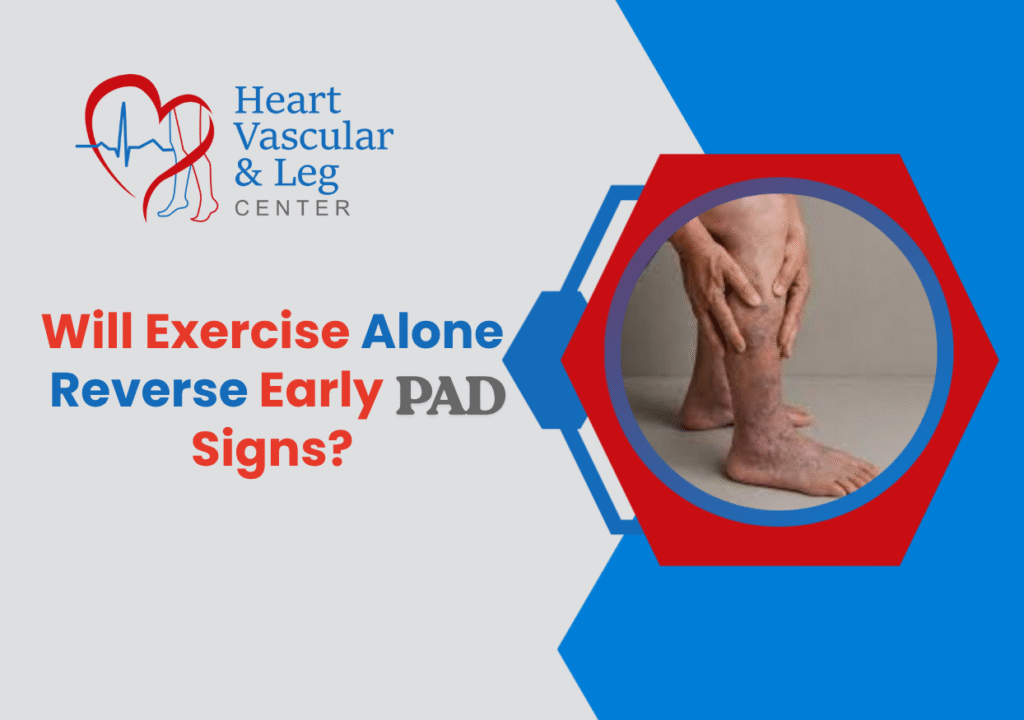
Will exercise alone reverse the signs of early PAD? If you’ve been diagnosed with early peripheral artery disease, chances are you’re already aware that exercise can be beneficial.
Perhaps even a walking program was recommended by your doctor as part of treatment.
But does it really reverse PAD solely through some exercise? Let’s discuss.
Exercise is essential in the control of PAD, but its limitations must be appreciated.
Real benefits may be derived from exercise, but it does not clear existing plaque or reverse the underlying arterial blockage.
What exercise can do is coax your body into developing collateral circulation – small blood vessels that forge detours around blocked arteries.
This may help relieve symptoms, but it won’t rid the body of the disease itself.
This is one of the reasons why regular physical activity is deemed crucial for lowering the impact of PAD. Here’s what consistent exercise can do:
Listen to your body. It might be giving you signals that exercise by itself may not be enough. These may include:
All these symptoms will tell you that your PAD is advancing and that it will need more than just changing your lifestyle.
Heart Vascular & Leg Center in Bakersfield has specialized in minimally invasive procedures that get to the root of the problem related to PAD.
Our team has over 20 years of experience in the treatment of vascular conditions.
We these advanced treatment options:
These procedures are performed in our office setting.
They’re completed the same day, and have helped prevent amputation in 80% of cases where it was initially recommended.
The best way to approach early PAD is to combine several strategies. Exercises should be one part of your plan, but not the entire plan, however.
A comprehensive strategy to managing PAD might involve:
The vascular specialists at Heart Vascular & Leg Center stress early intervention. Waiting to see if exercise alone will work allows the PAD to advance to more serious stages.
Their approach concentrates on combining lifestyle changes with targeted medical treatments in order to preserve circulation and avert complications.
Upon consultation, they assess and suggest the right balance of exercise, medication, and procedures for your specific condition since they know that every patient presents a different condition with PAD, and the one-size-fits-all approach is ineffective.
When you have been experiencing the symptoms of PAD, it is time to see specialists.
Treatment at an early age will stop the progression and save your mobility in the years to come.
At Heart Vascular & Leg Center, our patient-centered care model integrates the best medical practices and care.
Book an appointment now to see how to address the symptoms and find alternative treatment methods.
Your legs require expert care by doctors who specialize in vascular health.
How often should I exercise if I have early PAD?
The majority of physicians prescribe walking, three to five times a week, 30-45 minutes. Begin slowly and increase your distance gradually as tolerated.
When should I see a vascular specialist as opposed to my regular doctor?
Provided that your symptoms are not improving with exercise and lifestyle change within 3-6 months, or even getting worse, you should visit a vascular specialist and discuss additional treatment options.
© Copyright 2024 Vascular Health Partners LLC. All Rights Reserved
Designed By CyberWorx